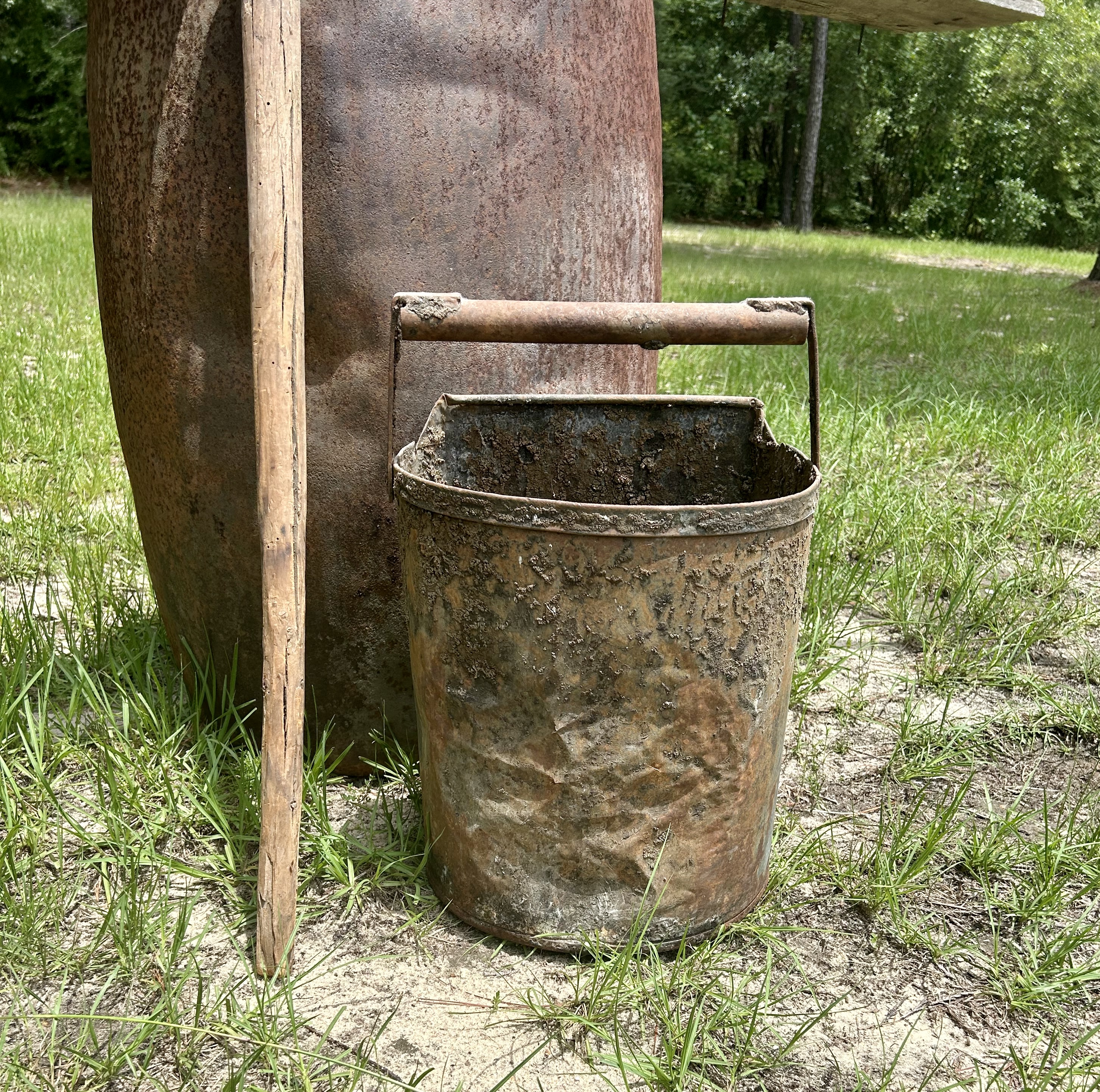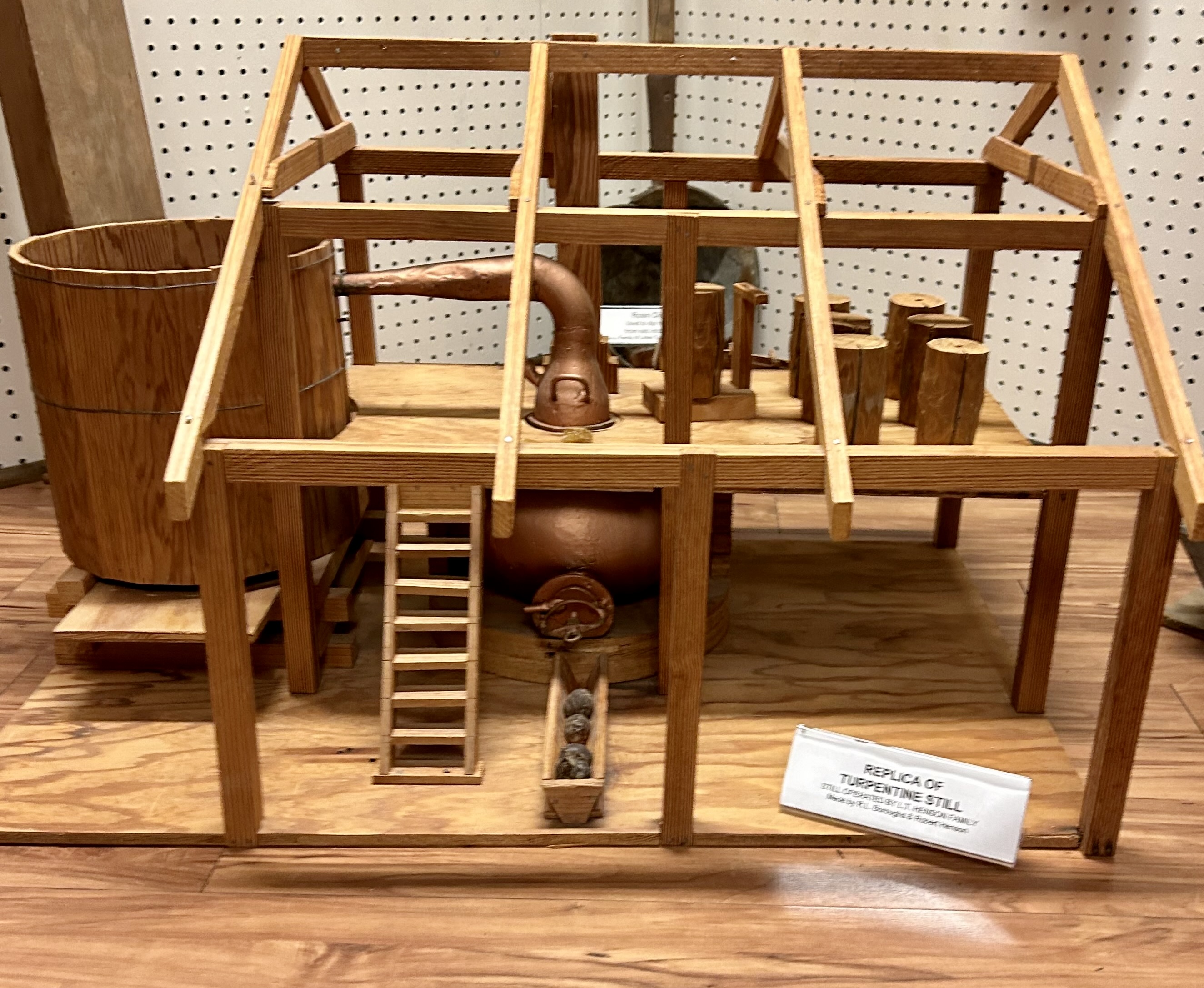‘Cat faces’, artifacts represent turpentine’s role in timber history
Walking through the woods in Washington County, you may stumble upon a scarred tree covered in odd cuts

rooted in the history of the turpentine industry.
Today, remnants of the turpentine business are scattered throughout the forests and woodlands across Southwest Alabama. Artifacts, sale documents, and “cat faces”, trees and stumps scarred from extracting turpentine, reflect the importance of turpentine in early forestry history.
“We find old cat faces,” says D.J. Landrum, owner of Landco Forestry Company. “It's almost always in the wet areas where logging equipment hasn't been.”
Turpentine crude is a sap extracted from pine trees that is distilled to create oils, or spirits, and rosin. These products, at the height of their use, were used for things such as varnishes, soaps, medicine, and paint solvents.
“We used that for medicine,” said Jamie Dees, a former Washington County turpentiner. “If you stumped your toe when you were playing in the woods as a child, you wrapped a rag around it and soaked it in the turpentine spirits.”
Turpentining was a main source of income for many property owners between the late 1800s and the early 1900s before World War II. This business continued into the 1930s, providing families a source of income during the economic insecurity of the Great Depression.

Those skilled in the process of extracting turpentine had to go through a laborious process. To extract turpentine crude from the trees, a woodchipper would be used to make V-shaped cuts into the tree. Sulfuric acid would be sprayed on these cuts to ease the flow and allow for a more efficient gathering of sap into cups attached below.
Spatulas were used to remove the sap from the cup to buckets. A worker used two interchanging buckets when collecting, one to pour sap into from the cups and the other to drain from the bucket into a 40-gallon drum. This was the most efficient method of transferring the thick sap.
However, the process was always messy as the sap was transferred from a bucket to the drum. Gaylon Dees, Jamie’s cousin and turpentiner, recalled, “I’d have that stuff all over my legs.”
Jamie Dees said that as a child he and his brothers would arrive home from school and head to the woods to collect sap until dark. When schools dismissed for summer, they would be out in the woods all day filling drums.
After the drums were full, they were then taken to a nearby distillery. Two distilleries used by Washington County collectors, Stallworth Pine Products Company and Taylor Lowenstein and Co., were in Mobile County. Trips to the distillery, where turpentine was graded based on quality and then distilled, were made about every three weeks for the average turpentiner.

According to the Dees, turpentine gatherers were a tight-knit community. There were “haulers” who would collect everyone's turpentine and take it to the distiller so one trip could be made instead of multiple runs. In addition, property owners would lease or share land with other families for them to turpentine the land.
Along with the stories of afternoons spent in the woods, some tools used for turpentining were also passed down to younger generations. Others donated their tools to museums to be displayed for posterity.
The Washington County Museum features a display dedicated to “The Turpentining Industry.”
“Because the turpentine industry was so widespread in Washington County, our artifacts come from all parts of the county. Our foundational families were either involved in logging, turpentining, or farming,” said Sheri Bush, curator of the Washington County Museum at 45 Court St. in Chatom.
In addition to timber and turpentine artifacts, the museum includes many other items important in Washington County history, including a 750-year-old Native canoe found on the Tombigbee River in 1973.
“Our small museum on the lower level of the Washington County Courthouse is a treasure that gives visitors a chance to see and learn about the history of Alabama’s first county,” Bush said.
Tags: Chatom